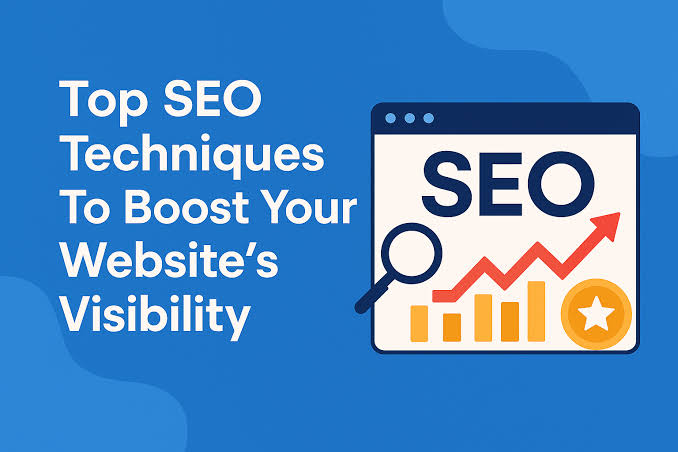Sales is vital for every business. Whether you run a startup, work alone, or are on a big sales team, knowing the right sales skills is key to closing deals and growing your business. By July 2025, sales have changed with new AI tools, different buyer habits, and more need for personal touch. But successful sales still mean building trust, solving problems, and giving value.
Today’s customers are more informed and selective than ever. They do their research, compare competitors, and expect a personalized experience throughout the sales process. Closing a deal now requires more than a good pitch—it demands empathy, insight, persistence, and strategy. Below, we explore practical and timely sales techniques that can help professionals close more deals and grow their businesses effectively.
Understand Your Ideal Customer
The first step to closing any deal is knowing exactly who you’re selling to. Without a deep understanding of your ideal customer, even the most skilled sales tactics will fall flat. Create detailed buyer personas based on industry data, demographics, challenges, and buying habits. This allows you to tailor your approach to the specific needs of each prospect.
In 2025, advanced CRM tools and data analytics platforms make it easier to gather this information and segment leads accordingly. Use insights from past deals, customer behavior, and market trends to craft messaging that speaks directly to the pain points of your target audience. When customers feel understood, they are far more likely to engage and convert.
Focus on Solutions, Not Just Products
A common mistake in sales is focusing too heavily on the features of a product rather than the benefits it provides. Buyers today are not interested in what your product does—they want to know how it solves their specific problem or improves their business. Position your offering as a solution rather than a commodity.
Use a consultative sales approach by asking questions, listening actively, and identifying pain points before suggesting a solution. Show prospects how your product or service will help them save time, reduce costs, or gain a competitive edge. By framing the conversation around outcomes and value, you build trust and relevance—both critical for closing deals.
Build Rapport and Establish Trust
Sales is fundamentally about relationships. No matter how innovative your product or persuasive your pitch, deals are rarely closed without a sense of trust between the buyer and seller. Take time to build rapport with prospects by being genuinely interested in their needs and treating them as partners, not just transactions.
In July 2025, with virtual meetings and remote selling more common, building trust requires extra effort. Use video calls whenever possible to establish face-to-face interaction. Be transparent, responsive, and follow through on your promises. Small gestures, such as sending a relevant article or remembering a personal detail, can go a long way in showing your sincerity and commitment.
Leverage Social Proof and Testimonials
In a digital-first world, social proof plays a major role in buying decisions. Prospects want to see that others have succeeded with your product or service. Incorporate testimonials, case studies, and customer success stories into your sales conversations. Share real-life examples of how you’ve helped businesses similar to theirs achieve results.
Sales teams in 2025 are using video testimonials, LinkedIn endorsements, and industry awards as tools to boost credibility. Don’t hesitate to bring in happy customers as references or include detailed metrics in case studies to back up your claims. Seeing is believing, and nothing reassures a buyer more than evidence of consistent success.
Master the Art of Follow-Up
Following up is one of the most underestimated yet powerful sales techniques. Most deals aren’t closed on the first call or meeting. It often takes multiple touchpoints before a prospect is ready to make a decision. However, many salespeople give up too early, leaving potential revenue on the table.
Develop a follow-up strategy that is persistent but not pushy. Use a combination of emails, calls, and social media messages to stay top-of-mind. Personalize your follow-ups with new insights or updates that offer additional value. Tools like automated email sequences and task reminders in CRM platforms can help ensure you never miss a chance to re-engage a warm lead.
Use the Power of Urgency and Scarcity
Creating a sense of urgency or scarcity can help push a deal over the finish line. When prospects feel that they might miss out on something valuable, they are more inclined to act. This doesn’t mean using pressure tactics, but rather highlighting real timelines, limited-time offers, or capacity constraints.
For example, if pricing will increase soon or if you’re running a promotion for a short period, let the prospect know honestly. If your product has a limited number of onboarding slots or licenses, communicate that early. This tactic, when used ethically, encourages quicker decisions and helps avoid deal stagnation.
Handle Objections with Confidence
Objections are a natural part of the sales process. Rather than seeing them as setbacks, treat them as opportunities to better understand your prospect’s concerns and clarify your offering. Common objections in 2025 include budget constraints, competing priorities, and doubts about ROI.
Prepare for objections by compiling a list of the most frequent ones you encounter and crafting thoughtful responses. When an objection arises, listen carefully, acknowledge the concern, and respond calmly with facts or reassurances. Never interrupt or argue—objection handling is about building trust and demonstrating that you are listening, not overpowering.
Ask for the Close with Clarity
Many salespeople hesitate when it comes to asking for the sale, fearing they might appear too aggressive. However, if you’ve delivered value, addressed concerns, and built trust, asking for the close is both natural and expected. Be clear and confident in your request.
Instead of vague phrases like “Let me know what you think,” try direct but polite language such as “Shall we move forward with the proposal today?” or “Can we schedule onboarding for next week?” Giving the customer a clear next step helps maintain momentum and shows that you are serious about earning their business.
Monitor and Improve Your Process
Finally, the best sales professionals are those who continuously evaluate and refine their techniques. Use CRM analytics to track your sales funnel, measure conversion rates, and identify bottlenecks. Are you losing leads after the first demo? Are certain emails performing better than others? Use this data to optimize your approach.
In 2025, AI-driven sales tools are making it easier than ever to track performance and suggest improvements. Embrace feedback, attend training, and stay up to date with industry trends to remain competitive. Growth in sales is a constant journey of learning and adapting.
Final Thoughts
Closing deals in 2025 requires a blend of strategic thinking, emotional intelligence, and smart use of technology. By understanding your customers deeply, offering genuine value, building trust, and following up with purpose, you lay the foundation for successful sales and sustainable business growth.
Effective sales isn’t about pushing products—it’s about helping customers achieve their goals. When you approach sales with this mindset, not only do you close more deals, but you also create lasting relationships that lead to repeat business and referrals. And in the ever-evolving business world, that’s the real secret to long-term success.



